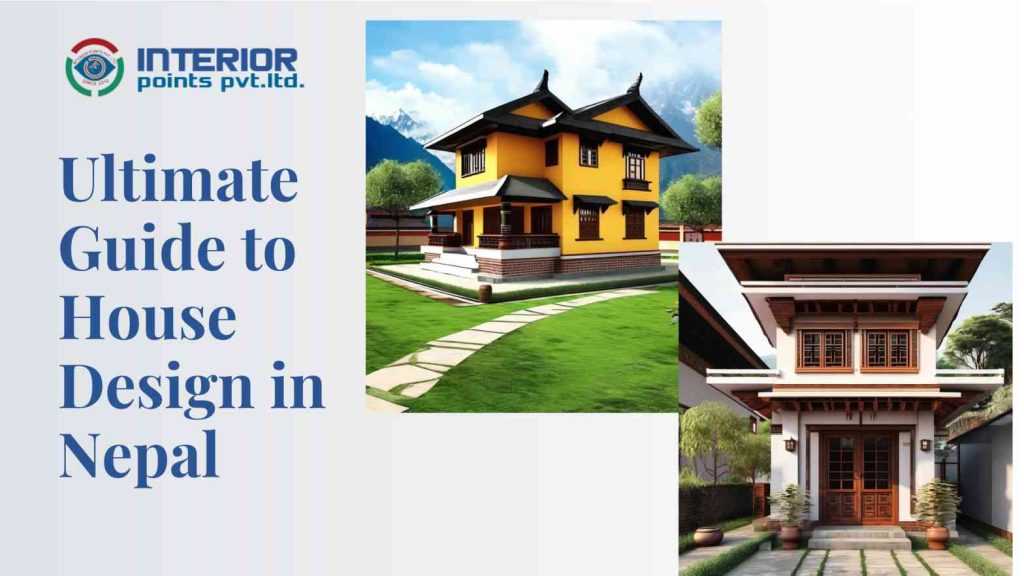
Nepal, with its high mountains and green plains, is a special place to build a home. Whether you are making a house in busy Kathmandu, peaceful Pokhara, or warm Chitwan, this guide will help you. We will show you the latest trends, useful tips, and ideas to build your dream house design in Nepal. Let’s explore how tradition and modern style come together to create beautiful and sustainable homes in Nepal.
Popular House Design Styles in Nepal
1. Traditional Nepali House Design
Traditional Nepali homes are a celebration of craftsmanship and community.
- Intricate Wood Carvings: Especially in Newari architecture, seen in windows, doors, and pillars.
- Courtyards (Chowks): Central open spaces that promote family bonding and natural ventilation.
- Sloped Roofs: Pagoda-style or tiled roofs designed for monsoon drainage and earthquake resilience.
- Materials: Locally sourced mud, brick, stone, and wood, making these homes eco-friendly.


2. Modern Contemporary Design
Modern house design in Nepal is gaining traction, especially in urban areas like Kathmandu, Pokhara, and Chitwan. Key features include:
- Minimalism: Clean lines, open spaces, and a “less is more” philosophy.
- Large Windows: Floor-to-ceiling glass to maximize natural light and scenic views.
- Materials: Concrete, glass, and steel for a sleek, urban look.
- Open Floor Plans: Seamless integration of living, dining, and kitchen areas for a spacious feel.
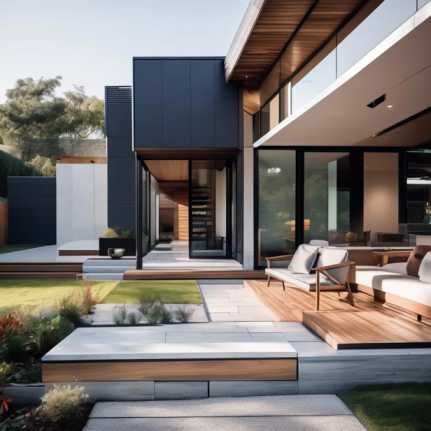
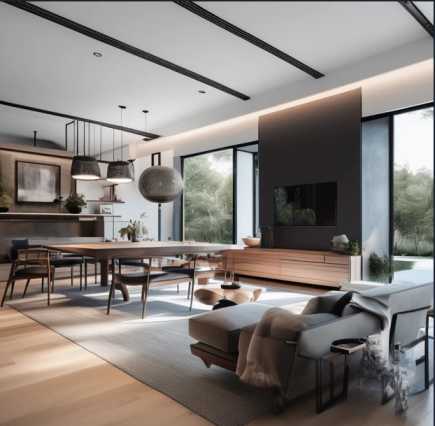
3. Eco-Friendly and Sustainable Design
With growing environmental consciousness, sustainable house designs are on the rise in Nepal. These homes prioritize:
- Green Roofs and Walls: To enhance energy efficiency and connect with nature.
- Solar Panels: Harnessing Nepal’s abundant sunlight for energy savings.
- Rainwater Harvesting: A practical solution for water conservation.
- Natural Materials: Bamboo, adobe, and stone to reduce the carbon footprint.
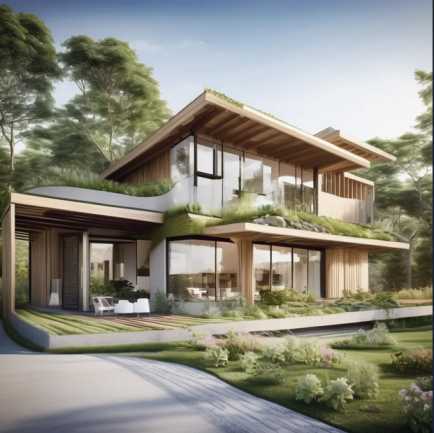
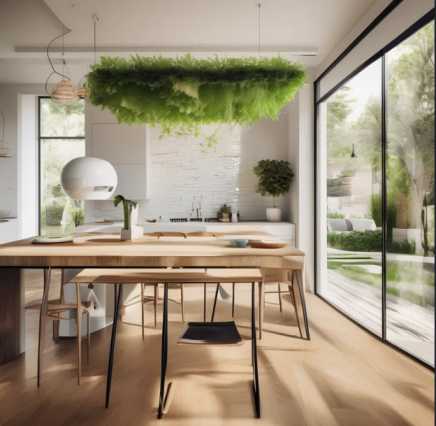
4. Small but Efficient Homes
With urban space constraints and rising land costs, small house designs are becoming increasingly popular in Nepal. These homes focus on:
- Compact Layouts: Multi-functional spaces that maximize every square foot.
- Vertical Storage: To optimize space in small areas.
- Natural Light: Skylights and large windows to make spaces feel larger.
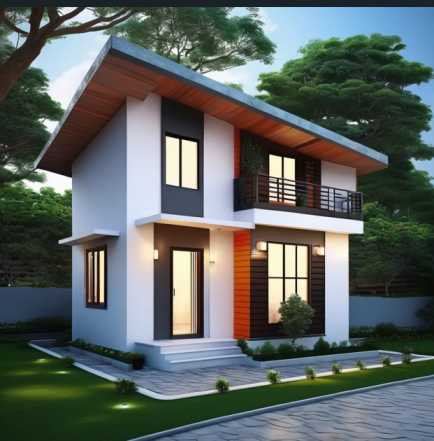
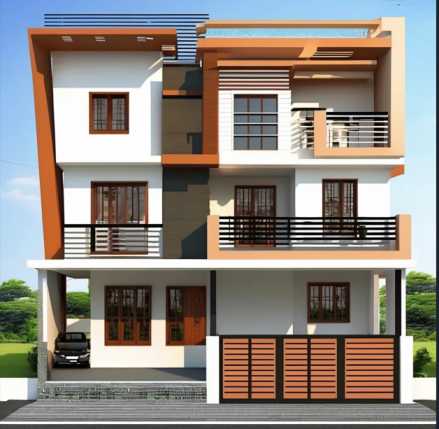
Key Considerations for House Design in Nepal
Building a home in Nepal requires thoughtful planning to address the country’s unique challenges and opportunities. Here are the key factors to consider:
1. Earthquake-Resistant Construction
Due to Nepal’s seismic zone, earthquake-resistant design is crucial. Reinforced concrete pillars ensure stability, while lightweight materials for roofs and upper floors reduce load. Flexible foundations are also vital to absorb seismic shocks, allowing the structure to sway without significant damage. These features are key to building a safe home in Nepal.
2. Climate and Geography
Nepal’s diverse climate demands region-specific designs:
Terai Region: Focus on ventilation and heat resistance with high ceilings and shaded courtyards.
Hilly Areas: Prioritize natural light and insulation with south-facing windows and stone walls.
Mountainous Regions: Use thick stone walls and compact layouts to retain heat.
3. Cultural Integration
Incorporating traditional Nepalese elements adds cultural significance to your home. Wood carvings on doors, windows, or pillars can provide a distinct Newari touch, while exposed brick facades offer a rustic, traditional look. Additionally, decorating with Dhaka textiles or Thangka art celebrates Nepal’s rich artistic heritage, giving the home a unique and meaningful character.
4. Sustainability and Energy Efficiency
Sustainable design is not just a trend—it’s a necessity in Nepal. Focus on:
Passive Design: Use natural ventilation and lighting to reduce energy consumption.
Smart Technology: Install automated lighting and energy management systems.
Local Materials: Bamboo, stone, and mud are sustainable and cost-effective.
Also Read: Korean House Design In Nepal 2025
Luxury House Designers In Nepal 2025
Conclusion
Designing a home in Nepal is a blend of creativity, practicality, and cultural celebration. Whether you prefer traditional Nepali architecture, modern elegance, or eco-friendly design, your home can reflect your vision and lifestyle. At Interior Points Nepal, we believe a well-designed home is more than just a structure—it’s a space that tells your story and connects you to your roots.
Ready to build your dream home? Contact Interior Points Nepal for expert guidance and personalized design solutions. Let’s create a space you’ll cherish for generations.
FAQ’s [ Guide TO House Desing In Nepal ]
The best house design style depends on the region. In the Terai, opt for designs with high ceilings and shaded courtyards to combat heat. In hilly areas like Pokhara, prioritize natural light and insulation. For mountainous regions, compact layouts with thick stone walls work best to retain heat. Across all regions, ensure proper drainage for monsoon seasons and earthquake-resistant features.
To make your house earthquake-resistant, use reinforced concrete pillars, lightweight roofing materials, and flexible foundations. Consult with architects who specialize in seismic design and consider technologies like Compressed Stabilized Earth Blocks (CSEB), which are both sustainable and resilient.
Construction costs in Nepal in 2025 vary by design:
Traditional designs: NPR 20,000–40,000 per square meter.
Modern contemporary designs: NPR 30,000–60,000 per square meter.
Eco-friendly designs: NPR 25,000–50,000 per square meter. Costs can vary based on location, materials, and labor charges, so it’s wise to budget for unexpected expenses.
You can blend tradition with modernity by using pagoda-style roofs with modern materials like concrete, incorporating wood carvings on doors or windows, and decorating with traditional Nepali art like Thangka paintings or Dhaka textiles. Exposed brick walls and courtyards also add a traditional touch to contemporary designs.
Look for an architect with experience in Nepal’s unique challenges, such as seismic design and diverse climates. Check their portfolio for projects similar to your vision, and ensure they prioritize sustainability and cultural integration. At Interior Points Nepal, our team of experts is ready to guide you through every step of the design process.